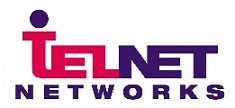-
Call Us:1.800.561.4019
Newsletter
For a Free Quote...
Latest Blog Posts
Blog Categories
Telnet Networks News
Simply Explained: Software Defined Networks
 While you may not be that familiar with Software Defined Networking (SDN), it may be the next “big thing.” As with other popular technologies like cloud and big data, there is no clear consensus on the exact definition of SDN. Also like these technologies, SDN initiatives are likely to be pushed by IT folks outside the network team, and can greatly affect network visibility.
While you may not be that familiar with Software Defined Networking (SDN), it may be the next “big thing.” As with other popular technologies like cloud and big data, there is no clear consensus on the exact definition of SDN. Also like these technologies, SDN initiatives are likely to be pushed by IT folks outside the network team, and can greatly affect network visibility.
While an SDN future may seem a few light years away, given the clout of vendors and users pushing these technologies, including Microsoft, Google, VMware and Verizon, it’s important to be aware of the concepts and terminology behind the technology.
What is SDN?
As cloud has abstracted storage and virtualization separates applications from servers, SDN attempts to separate the system that makes decisions about where traffic is sent (the control plane) from the underlying system that forwards traffic to the selected destination (the data plane). So, rather than packet route decisions being determined by local infrastructure one hop at a time, routing decisions are made by a centralized controller server.
Benefits
Operating from a holistic network-wide approach, the benefits to SDN are threefold:
Performance and traffic flow become more efficient as decisions are made at a network-wide level by the controller, rather than at the device level where traffic routing decisions are based only upon the links between the forwarding device and adjacent devices.
Policy and configuration management can be done at a centralized level rather than device-by-device.
Network devices, such as switches, can be simplified and focused purely on packet forwarding, rather than having them carry a heavy, complex, and expensive feature set
Key Concepts
Controller: Centralized device that communicates with all the network devices in a domain, determines the topology, and programs network connectivity paths from a centralized view. The network is programmed and managed at the network level rather than through individual devices.
Switching: In SDN environments, hardware and software switches forward traffic as dictated by the controller. The importance and capabilities of software switches will increase within SDN. Hardware switches will likely be dedicated purely to forwarding large amounts of traffic in SDN environments.
Virtual Overlay Networks: Overlays are used to create virtual networks that are logically separated from each other while sharing the same underlying physical network. Packets are encapsulated inside another and sent to a tunnel endpoint where they are de-capsulated. The original packets are then delivered to the destination.
Net-Net for Network Teams
While we’re still several years away from full-fledged SDN, conversations will likely start in 2014 and potentially outside of the network team’s view. Try to keep up with SDN plans in your organization, so that you can encourage monitoring visibility. Be a part of the initial design conversation rather than inherit any issues post-implementation. Additionally, while networks may become more robust and automated through SDN, there will always be a need for in-depth packet capture and analysis. This will help to assess long-term performance and perform root cause analysis to pinpoint the source of any service interruptions.
SDN Resources
For more detail on SDN concepts, technology, and deployments, check out the following link:
Network World- In-Depth SDN guide
Thanks to Networks Instruments for the article.
When you subscribe to the blog, we will send you an e-mail when there are new updates on the site so you wouldn't miss them.





Comments